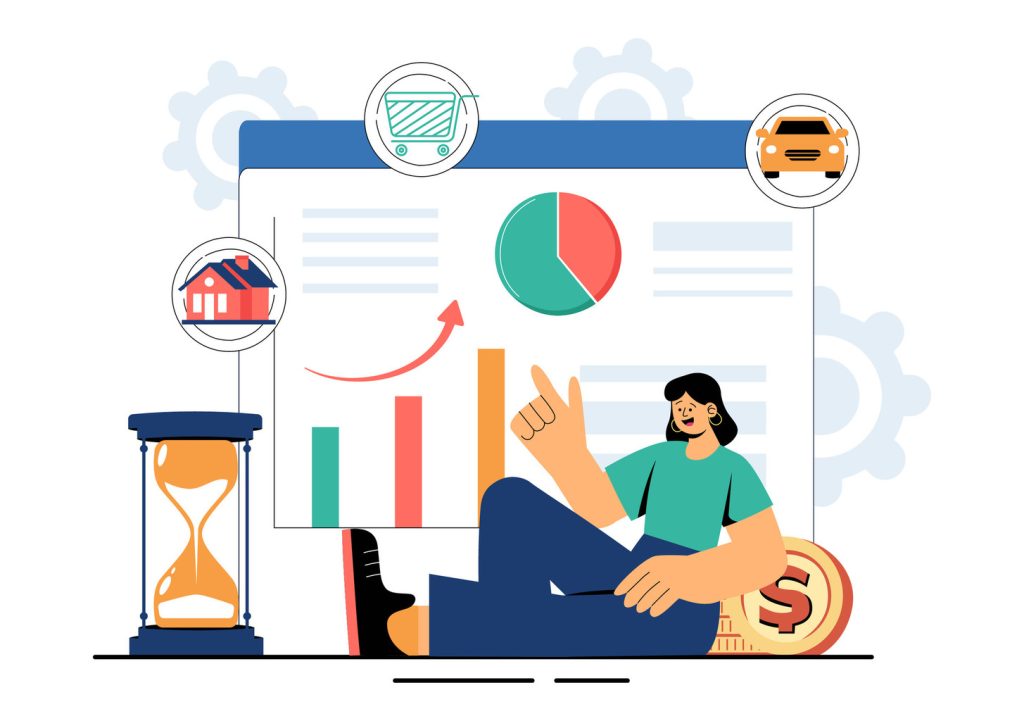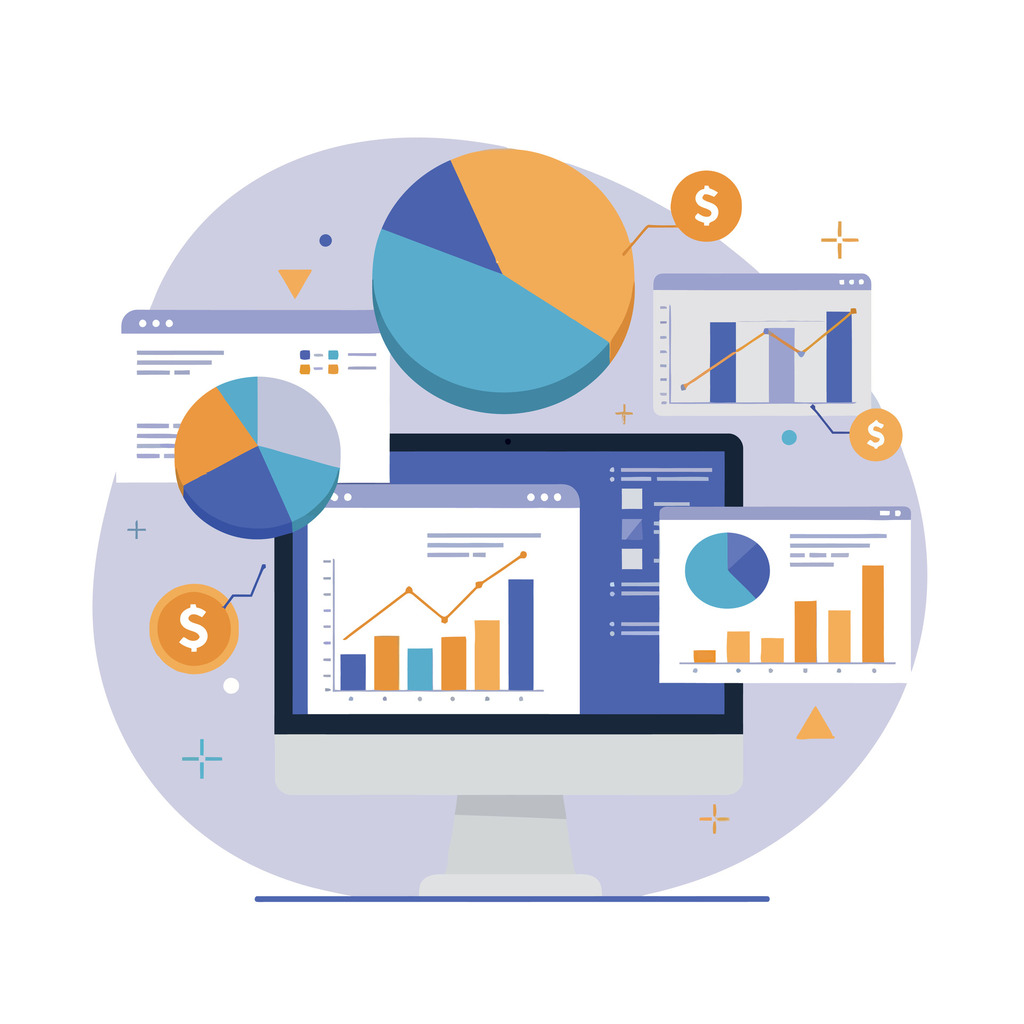Top Subscription Management Tools to Streamline Operations

Modern businesses face growing pressure to optimize SaaS portfolios and manage recurring billing cycles efficiently, which drives the need for effective Advanced Management Tools. With 72% of companies relying on software-as-a-service platforms, operational complexity increases every day. Manual processes can create billing errors, delayed payments, and gaps in financial visibility—all of which impact profitability.
Subscription Advanced Management Tools and software solve these challenges through automated billing, real-time analytics, and seamless integrations. These platforms replace spreadsheets and fragmented systems with centralized dashboards. Leaders gain instant access to critical insights like renewal dates, usage patterns, and revenue forecasts, helping them make informed decisions and reduce administrative workloads.
Choosing the right solution requires balancing cost, scalability, and integration capabilities. Decision-makers should focus on platforms that adapt to evolving business needs without requiring constant IT intervention. The most effective tools offer analytics reporting features, customizable billing, and subscription lifecycle tracking to optimize every stage of the customer journey.
Key Takeaways
- Automated billing systems reduce errors by 89% compared to manual processes
- Real-time dashboards improve decision-making for SaaS budget allocation
- Scalable solutions support business growth without workflow disruptions
- Integration capabilities prevent data silos between financial and CRM systems
- Predictive analytics help forecast revenue trends and customer retention rates
Introduction to Subscription Advanced Management Tools
Efficiently handling recurring payments and managing various subscription plans is critical for scaling subscription businesses. Manual spreadsheets can’t keep up with different pricing models and frequent plan changes. Modern subscription management software automates these workflows while maintaining compliance with global tax regulations.
Centralized systems address three core challenges:
| Functionality | Traditional Approach | Modern Solution |
|---|---|---|
| Invoice Generation | Error-prone manual entries | Auto-generated templates with tax calculations |
| Payment Tracking | Disconnected financial records | Real-time revenue dashboards |
| System Integration | Data silos between departments | API connections with CRM/ERP platforms |
These solutions reduce billing discrepancies by 78% according to recent SaaS industry reports. Automated dunning processes recover failed payments through predefined escalation paths, preserving customer relationships.
For growing enterprises, visibility into churn patterns and usage metrics drives strategic decisions. Real-time analytics reveal which subscription tiers deliver maximum profitability, enabling targeted retention campaigns. Integration capabilities ensure seamless data flow between financial systems and customer support portals.
Adopting these platforms allows teams to shift focus from administrative tasks to innovation. Companies report 40% faster month-end closures and 92% improvement in audit readiness after implementation.
The Rising Importance of Subscription Software and Advanced Management Tools in Today’s Market

As recurring revenue models become the norm, companies increasingly rely on specialized platforms for efficiency. More than 60% of U.S. businesses operate under subscription models, creating a pressing need for systems that automate billing cycles, manage subscription lifecycles, and deliver actionable insights.
Traditional manual approaches often fail to scale. Tracking renewals and revenue recognition manually leads to errors, compliance risks, and costly delays. Modern subscription management software eliminates these gaps through automation and centralized data hubs.
Three factors drive adoption:
- Customer expectations for flexible payment options
- Regulatory demands for accurate revenue recognition
- Competitive pressure to reduce churn through data insights
SaaS companies using these platforms report 35% faster dispute resolution and 28% higher renewal rates. Real-time dashboards reveal usage trends, enabling teams to upsell strategically. For growing enterprises, this visibility transforms how they forecast earnings and allocate resources.
The subscription business model thrives on predictability. Automated systems help organizations convert one-time buyers into long-term subscribers while maintaining compliance. As markets evolve, these solutions become essential for balancing growth with operational control.
Key Features of an Efficient Subscription Management Software
Operational complexity in recurring revenue models demands robust platforms with specific capabilities. Leading solutions combine real-time visibility with workflow automation to address critical pain points. These systems transform how teams track financial metrics, engage customers, and scale operations.
Centralized Dashboard and Real-Time Insights with Powerful Advanced Management Tools
A unified interface serves as the command center for tracking all subscription activities. Decision-makers view usage trends, renewal dates, and revenue forecasts through customizable widgets. Real-time dashboards highlight customer engagement patterns, helping teams identify upsell opportunities before contracts expire.
Advanced platforms integrate with CRM and accounting systems, eliminating data silos. Role-based permissions ensure sensitive financial data remains secure while enabling cross-department collaboration. Proactive alerts flag payment failures or expiring credit cards, reducing revenue leakage risks.
Advanced Management Tools for Automated Billing and Renewal Processes
As a result, manual invoice generation becomes obsolete with intelligent automation and advanced management tools. For example, these systems and Advanced Management Tools apply tax rules, currency conversions, and discounts accurately across global markets. Consequently, automated billing processes powered by management tools reduce errors by 74% compared to spreadsheet-based methods, according to FinTech benchmarks.
Key advantages include:
- Preconfigured renewal reminders sent via email or SMS
- Seamless payment retries for failed transactions
- Customizable escalation paths for overdue accounts
These features ensure consistent cash flow while maintaining positive customer relationships. Analytics tools track churn drivers, enabling data-driven retention strategies.
Benefits of Automating Subscription Billing and Revenue Recognition

Therefore, automating financial workflows with advanced management tools transforms how organizations handle recurring revenue streams. In addition, by replacing error-prone manual tasks with precision-driven management tools and systems, businesses achieve operational excellence while maintaining compliance. As a result, this shift powered by management tools directly impacts profitability through consistent cash flow and audit-ready reporting.
Reduced Manual Errors with the Help of Advanced Management Tools
Human intervention in billing processes creates costly mistakes. Automated systems eliminate spreadsheet-based errors by applying preset rules for revenue recognition and tax calculations. Research shows companies using these tools experience 68% fewer billing disputes and 92% faster invoice corrections.
| Process | Manual Approach | Automated Solution |
|---|---|---|
| Invoice Generation | 3-5 days with potential typos | Instant, error-free templates |
| Payment Retries | Missed follow-ups | Scheduled escalation paths |
| Compliance Reporting | Quarterly manual audits | Real-time ASC 606 tracking |
“Organizations automating billing operations report 41% lower administrative costs within six months of implementation.”
Enhanced Financial Reporting
Real-time dashboards provide granular insights into cash flow patterns and customer retention metrics. Automated financial reporting tools sync with accounting platforms, delivering instant visibility into deferred revenue and churn rates. Finance teams gain predictive capabilities to forecast quarterly earnings with 89% accuracy.
Moreover, these systems and management tools also streamline multi-currency transactions and tax jurisdictions, simplifying complex global operations. For example, one enterprise reduced month-end closing time from 14 days to just 72 hours after adopting automated billing, invoicing workflows, and robust management tools. As a result, this improvement enabled faster decision-making and scalable growth without added overhead, demonstrating the value of management tools.
Product Roundup Overview: Best Tools for Subscription Management Tools
Navigating the landscape of recurring revenue platforms requires understanding diverse capabilities. Twelve standout solutions address billing complexity through specialized features. These systems automate financial workflows while delivering actionable insights for growth-oriented teams.
| Focus Area | Key Strength | Scalability Level |
|---|---|---|
| Enterprise Operations | Advanced revenue recognition | 50,000+ transactions/month |
| Mid-Market | Customizable pricing tiers | 5,000-50,000 transactions |
| SMBs | Prebuilt CRM integrations | Up to 5,000 transactions |
Top contenders differentiate through AI-driven forecasting and multi-currency support. Chargebee excels in handling usage-based billing models, while Recurly provides robust dunning management. For global enterprises, Stripe Billing offers 135+ payment method integrations.
“Platform selection hinges on aligning technical capabilities with long-term business objectives,” notes a 2023 Gartner report on financial automation.
Decision-makers should prioritize:
- Compatibility with existing tech stacks
- Real-time tax compliance updates
- Granular customer lifecycle tracking
Security certifications like SOC 2 Type II separate market leaders from basic systems. Solutions offering automated audit trails reduce compliance risks by 83% compared to manual alternatives. Teams gain operational clarity through unified dashboards tracking churn drivers and expansion revenue.
Exploring Zluri: Comprehensive SaaS Management Tools
Organizations drowning in SaaS sprawl find relief through platforms like Zluri. This solution tackles shadow IT risks and overspending with nine discovery methods, mapping every application across departments. Its unified interface replaces chaotic spreadsheets, delivering enterprise-grade control for mid-sized companies.
Key Capabilities and Licensing Oversight
Zluri’s license tracking provides a 360-degree view of software entitlements, from active subscriptions to perpetual agreements. The system flags unused seats and duplicate tools, helping teams reclaim 23% of wasted spending on average. Real-time contract expiration alerts prevent service disruptions during renewal negotiations.
| Challenge | Traditional Approach | Zluri Solution |
|---|---|---|
| License Tracking | Manual spreadsheets | Automated utilization reports |
| Cost Control | Reactive budget cuts | Usage-based optimization |
| Compliance | Quarterly audits | Continuous policy monitoring |
Financial Control and Renewal Automation
The platform’s cost analytics identify underperforming subscriptions using actual usage data. Automated billing workflows sync with payment gateways, reducing invoice errors by 81% compared to manual processes. A centralized renewal calendar gives teams 45-day advance notices for contract decisions.
“Zluri cut our SaaS costs by 34% in six months while ensuring full compliance.” – Enterprise Technology Director
With G2 and Capterra ratings exceeding 4.8/5, Zluri proves its value in lifecycle management. The system’s security protocols automatically restrict unauthorized SaaS purchases, closing gaps in the subscription lifecycle.
Spotlight on Zoho Subscriptions: Streamlining Billing Processes
Zoho Subscriptions addresses modern financial challenges through customizable automation and real-time analytics. Its platform simplifies recurring revenue operations while maintaining compliance across global markets. Businesses gain precision in handling subscription billing cycles, from basic monthly plans to intricate usage-based structures.
Flexible Payment Frameworks
In addition, the system and its management tools support various subscription types, enabling companies to tailor pricing tiers for different customer segments. Moreover, teams can deploy fixed-rate plans, hybrid packages, or pay-as-you-go models without technical overhead by leveraging advanced management tools. As a result, this adaptability—powered by management tools—helps organizations scale operations while meeting regional payment preferences.
Key advantages include:
- Multi-currency invoicing with automated tax calculations
- Customizable billing intervals aligned with cash flow needs
- Real-time alerts for expiring payment methods
Proactive Payment Recovery
Zoho’s dunning management system reduces revenue loss through intelligent escalation paths. Failed transactions trigger personalized reminders and automated retries across multiple channels. The platform’s analytics identify chronic payment issues, allowing teams to address root causes.
“Since implementing Zoho, our failed payment recovery rate improved by 63% without damaging client relationships.” – SaaS Finance Director
Comprehensive dashboards display subscription billing metrics like customer lifetime value and churn predictors. Integration with Zoho’s ecosystem creates seamless data flow between sales, support, and accounting teams. With G2 and Capterra scores averaging 4.45/5, the platform proves its value in optimizing billing processes for growing enterprises.
Deep Dive into Sage Intacct for Subscription Tracking

Financial teams wrestling with fragmented data gain clarity through Sage Intacct’s unified platform. Its real-time hub eliminates guesswork by tracking every subscription metric across departments. Automated billing invoicing processes slash errors while maintaining compliance with ASC 606 and IFRS 15 standards.
| Challenge | Traditional Systems | Sage Intacct Advantage |
|---|---|---|
| Revenue Tracking | Manual journal entries | AI-driven revenue recognition |
| Compliance | Quarterly spreadsheet audits | Real-time GAAP alignment |
| Reporting | Static PDF exports | Interactive financial reporting dashboards |
The platform’s subscription billing engine handles complex pricing models – from tiered plans to usage-based charges. Nonprofits benefit from specialized tools tracking donor-restricted funds and program outcomes. Real-time analytics reveal churn patterns before they impact cash flow.
“Sage Intacct reduced our month-end close from 10 days to 72 hours while improving audit accuracy.” – Nonprofit CFO
Key strengths include:
- 360-degree visibility into contract renewals and payment histories
- Customizable workflows for multi-entity revenue recognition
- Prebuilt connectors for Salesforce, ADP, and other enterprise systems
With G2 and Capterra scores averaging 4.25/5, Sage Intacct proves its value in subscription management. Teams eliminate manual reconciliations while gaining predictive insights into lifetime customer value. The platform’s focus on automation transforms how growing organizations scale their financial operations.
Paddle’s Approach: Simplifying Revenue Recognition and Analytics

To begin with, global expansion challenges meet their match in Paddle’s unified platform for recurring revenue operations. Furthermore, the system tackles complex revenue recognition requirements while adapting to diverse pricing models. As a result, businesses automate billing cycles and tax compliance across 200+ regions, eliminating spreadsheet dependency.
Firstly, finance teams gain precision through ASC 606/IFRS 15-aligned interfaces. Additionally, real-time analytics reporting tracks customer lifetime value and churn drivers. Consequently, failed payment recovery rates improve by 58% using predictive dunning workflows that preserve client relationships.
Paddle’s dashboard displays critical subscription metrics like MRR growth and plan downgrades. Decision-makers spot trends through visualizations of retention patterns and geographic performance. The merchant-of-record model handles VAT, GST, and sales tax calculations automatically.
With G2 (3.8/5) and Capterra (4.5/5) ratings, Paddle proves its value in streamlining subscription billing. Users report 41% faster financial reporting cycles and 67% fewer compliance errors. The platform turns fragmented data into actionable insights for scaling businesses.

